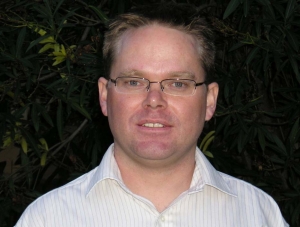Time to level the tertiary playing field
Research news
Two recent Deakin research projects have found that people from lower Socioeconomic Status (SES) backgrounds are still not accessing higher education to the same extent as others in the community.
Almost 50 per cent of school leavers’ preferences for TAFE degrees come from the wealthiest 25 per cent of the population – and only 14 per cent of student enrolments in TAFE degrees come from society’s most disadvantaged.
The projects were conducted by Professor Trevor Gale, Professor of Education Policy and Social Justice, and Dr Stephen Parker, both from Deakin’s Centre for Research in Educational Futures and Innovation (CREFI).
Dr Parker said that the findings are disappointing, with many in the community assuming that lower SES students were choosing TAFEs for higher level study.
The most recent project was undertaken for the National Centre for Student Equity in Higher Education and drew on Tertiary Admissions Centre preference data from secondary school students in Victoria and South Australia over the past five years. These are the states that offer the most TAFE degrees, usually in areas like creative arts, health, education, management and commerce.
The researchers found that 47 per cent of students who indicate a preference to enrol in a bachelor degree at a TAFE institution are from high SES backgrounds, but with low ATARs (with an average ATAR of just under 57) that may prevent them from studying at university.
Only 15 per cent of preferences came from students from low SES backgrounds, while the other 38 per cent came from the middle SES category (50 per cent of the population).
While the most recent research focussed on student preferences, rather than enrolments, Dr Parker explained that previous research conducted for the National VET Equity Advisory Board in 2013 shows a similar under-representation of low SES students enrolled in degrees in the VET sector.
Dr Parker noted that, in combination, the research projects indicate that one of the major causes of the low uptake for lower SES groups can be attributed to a lack of “navigational capacity” – or socio-cultural resources, experiences and knowledge about how to navigate pathways across the post-secondary system.
He suggests that addressing the problem requires a complex response, as people from higher SES backgrounds often have access to more cultural resources and informal knowledge and networks that have contributed to their awareness about pathways and opportunities like TAFE degrees.
“For example, many people are not aware that some TAFEs offer degrees,” he said.
“To improve the uptake for lower SES students, we will need to improve career counsellors’ knowledge about options, improve TAFE and university outreach into schools, and improve outreach into Certificate I-IV level TAFE courses so that more TAFE students consider pursuing pathways into the degree courses and are provided with support in navigating these pathways.”
Dr Parker explained that both research projects are timely, given that the Federal Government is considering making TAFE and private provider degrees and sub-degrees commonwealth-supported (CSP), as part of the demand-driven funding model of higher education.
“We also need to be mindful that we don’t want TAFEs to be the only place that students from lower SES backgrounds do their degrees,” he said.
Writing for the EduResearch Matters blog on the potential impact of extending CSP funding to TAFE and other private providers of higher education, Professor Gale said that “In the longer term, when TAFEs become the government’s ‘preferred’ provider of higher education for low SES students, as Further Education Colleges are in the UK, high SES students will benefit from the increased status of a higher education gained at a university, particularly high SES students with low ATARs, who can afford to pay for university degrees.”
Share this story
 Dr Stephen Parker.
Dr Stephen Parker.
